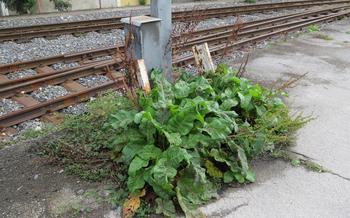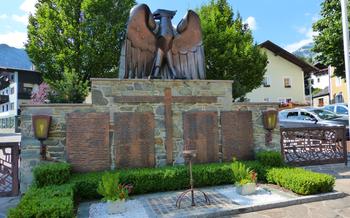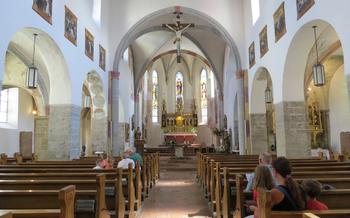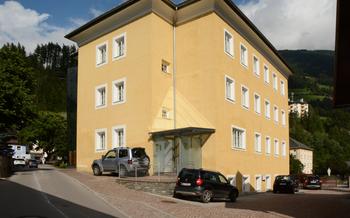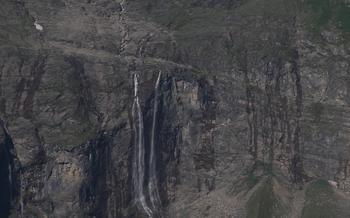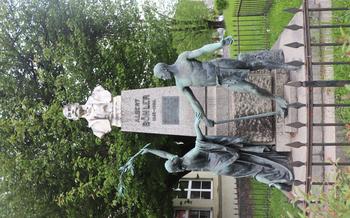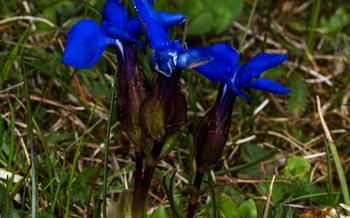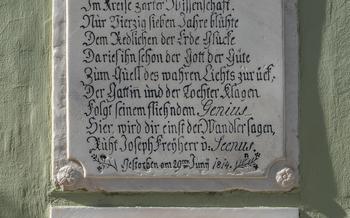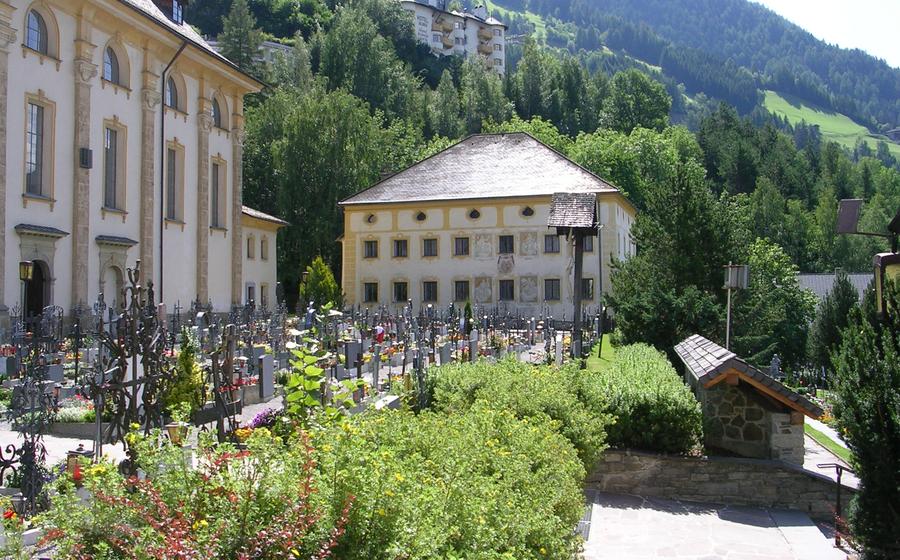
Grossglockner High Alpine Road
- The Grossglockner High Alpine Road
- Hohe Tauern National Park: A Realm of Natural Wonders
- Grossglockner Peak
- Pasterze Glacier
- Kaiser-Franz-Josefs-Höhe
- Edelweiss-Spitze: A Hike to Remember
- Fuscher Törl: A Scenic Mountain Pass with Panoramic Views
- Heiligenblut: A Village Steeped in History and Legend
- Lienz: A Cultural and Historical Gem in East Tyrol
- Aguntum: Unraveling the Legacy of Ancient Rome
- Nassfeld Ski Area
- Lake Weissensee: A Pristine Alpine Gem
- Villach: City of Confluence and Charm
- Insider Tip: Embark on a Culinary Adventure at the Grossglockner Resort
The Grossglockner High Alpine Road
The Grossglockner High Alpine Road is a breathtaking journey through the heart of the Hohe Tauern National Park, offering panoramic views of the majestic Grossglockner, Austria's highest mountain. This engineering marvel winds its way through a stunning alpine landscape, passing towering peaks, pristine lakes, and picturesque villages.
Built between 1930 and 1935, the road showcases the ingenuity and determination of its creators. It stands as a testament to human ambition and the desire to conquer even the most challenging terrain. The road's construction involved overcoming numerous obstacles, including steep slopes, treacherous rock formations, and unpredictable weather conditions.
Driving along the Grossglockner High Alpine Road is an unforgettable experience, offering a front-row seat to the wonders of the Hohe Tauern National Park. The road features 36 hairpin bends, providing thrilling twists and turns as it ascends to an elevation of 2,504 meters (8,215 feet) above sea level.
Tolls are required to access the Grossglockner High Alpine Road, and it is typically open from May to October, depending on weather conditions. Visitors are advised to plan their trip carefully, as the weather can change rapidly in the mountains. Safety precautions, such as wearing appropriate clothing and footwear, are essential for a safe and enjoyable journey along this iconic alpine road.
Hohe Tauern National Park: A Realm of Natural Wonders
Hohe Tauern National Park, the largest national park in Austria, encompasses a mesmerizing tapestry of pristine alpine landscapes, towering peaks, tranquil lakes, and lush forests. Recognized as a UNESCO World Heritage Site, the park is a haven for biodiversity, boasting an array of rare and endangered species, including the golden eagle, bearded vulture, and alpine ibex.
Established in 1981, Hohe Tauern National Park is home to a diverse range of habitats, from subalpine meadows to high-altitude glaciers. The park's varied terrain provides a sanctuary for a wide variety of flora and fauna, including over 1,800 plant species, 200 bird species, and 50 mammal species.
The park's conservation efforts are paramount, focusing on preserving the delicate balance of its ecosystems and protecting its unique wildlife. Sustainable tourism practices are actively promoted, ensuring that visitors can experience the park's natural wonders without compromising its ecological integrity.
Practical Tips:
-
Embark on a guided hike with experienced rangers to learn about the park's flora, fauna, and conservation initiatives.
-
Visit the National Park Center in Mittersill to gain insights into the park's history, geology, and diverse ecosystems.
-
Explore the numerous well-marked hiking trails, ranging from leisurely walks to challenging mountain ascents.
-
Observe wildlife from designated areas, respecting their natural habitats and minimizing disturbance.
-
Support sustainable tourism by choosing eco-friendly accommodations and dining options within the park.
Grossglockner Peak
Towering over the Hohe Tauern National Park, Grossglockner Peak stands as a majestic symbol of the Austrian Alps. With its summit reaching an elevation of 3,798 meters (12,461 feet), it is the highest mountain in Austria and the second-highest in the Eastern Alps. Its commanding presence and stunning beauty have earned it a reputation as one of the most iconic peaks in the world.
For experienced climbers and mountaineers, Grossglockner Peak presents a thrilling challenge. The ascent routes traverse glaciers, steep rock faces, and exposed ridges, requiring technical skills, endurance, and a deep respect for the mountain's unpredictable weather conditions. Guided tours are available for those seeking a safe and informative experience, providing valuable insights into the mountain's history, geology, and climbing techniques.
The rewards of reaching the summit are immeasurable. The panoramic views from the top are simply breathtaking, stretching across the entire Alpine range. The surrounding peaks, glaciers, and valleys unfold like a vast tapestry, creating a sense of awe and wonder. It is a moment that every climber cherishes, a testament to their determination and love for the mountains.
Practical Tips:
- Obtain the necessary permits and register your climb with the local authorities.
- Hire a certified mountain guide if you lack the experience or equipment for a safe ascent.
- Be prepared for unpredictable weather conditions and pack appropriate clothing, including waterproof gear, warm layers, and sturdy footwear.
- Bring adequate food and water, as there are no facilities on the mountain.
- Start your climb early to avoid the afternoon thunderstorms that are common in the Alps.
- Respect the fragility of the alpine environment and leave no trace of your passage.
Pasterze Glacier
The Pasterze Glacier, Austria's largest glacier, is nestled in the heart of the Hohe Tauern National Park. Located at the foot of the Grossglockner, it's a testament to the power of nature and a reminder of the delicate balance of our planet's ecosystems.
Once stretching over 9 kilometers in length, the Pasterze Glacier has been steadily receding due to the effects of climate change. Its icy expanse, marked by deep crevasses and towering ice walls, bears witness to the ongoing battle between nature's forces.
Visitors can embark on guided glacier tours to explore the frozen wonderland up close. Equipped with crampons and ice axes, you'll traverse the icy terrain, learning about glacial formations and the impact of climate change on this fragile ecosystem.
Don't forget to bundle up, as temperatures on the glacier can drop significantly. Sturdy hiking boots and appropriate clothing are essential for a safe and enjoyable experience.
As you explore the Pasterze Glacier, take a moment to reflect on the beauty and fragility of our natural world. It's a reminder that we must act now to protect these precious ecosystems for future generations.
Kaiser-Franz-Josefs-Höhe
Kaiser-Franz-Josefs-Höhe is the undisputed highlight of the Grossglockner High Alpine Road. Located at an elevation of 2,369 meters, this iconic viewpoint offers panoramic views that will leave you breathless. Named after Emperor Franz Joseph I, who visited the site in 1856, Kaiser-Franz-Josefs-Höhe has become a symbol of the region's natural beauty and a must-visit destination for travelers from around the world.
The panoramic platform at Kaiser-Franz-Josefs-Höhe is an architectural masterpiece, designed to blend seamlessly with the surrounding landscape. From this vantage point, you can feast your eyes on the majestic Grossglockner, the Pasterze Glacier, and the surrounding peaks of the Hohe Tauern National Park. The views are simply breathtaking, and it's easy to spend hours taking it all in.
In addition to the stunning views, Kaiser-Franz-Josefs-Höhe is also home to a visitor center, where you can learn more about the history and geology of the region. The center features interactive exhibits, a cinema, and a restaurant, making it a great place to take a break and soak up the alpine atmosphere.
Practical Tips:
-
Parking is available at the summit, but it can get crowded during peak season. Arrive early or be prepared to wait for a spot.
-
Restrooms are available at the visitor center.
-
The restaurant at the visitor center offers a range of refreshments, including snacks, sandwiches, and hot meals.
-
Guided tours of the Grossglockner High Alpine Road are available from various tour operators.
Edelweiss-Spitze: A Hike to Remember
Amidst the majestic peaks of the Hohe Tauern National Park, the Edelweiss-Spitze stands tall, its distinctive shape resembling the delicate edelweiss flower. This stunning mountain peak, reaching an elevation of 2,570 meters, offers a challenging yet rewarding hiking experience for those seeking breathtaking views and alpine adventure.
The trail to the Edelweiss-Spitze begins in the picturesque village of Kals am Großglockner, leading hikers through lush meadows and fragrant pine forests. As the path ascends, the scenery transforms into a breathtaking panorama of towering peaks, sparkling glaciers, and cascading waterfalls. The route demands stamina and surefootedness, as it traverses steep slopes and rocky terrain.
Upon reaching the summit, hikers are rewarded with an awe-inspiring vista that stretches across the entire Alpine range. The Grossglockner, Austria's highest mountain, dominates the skyline, while the surrounding peaks, including the Großvenediger and the Glocknergruppe, form a majestic backdrop. The panoramic views from the Edelweiss-Spitze are truly unforgettable, making the strenuous hike well worth the effort.
For those embarking on this challenging adventure, proper preparation is essential. Sturdy hiking boots, weather-appropriate clothing, and sufficient water and snacks are recommended. Hikers should also be aware of the changing weather conditions in the mountains and be prepared for sudden changes in temperature and visibility.
The Edelweiss-Spitze trail is an unforgettable experience for seasoned hikers seeking a challenging and rewarding alpine adventure. The stunning views from the summit, coupled with the tranquility of the surrounding nature, create a truly magical moment that will stay etched in the memories of every hiker.
Fuscher Törl: A Scenic Mountain Pass with Panoramic Views
Fuscher Törl is a captivating mountain pass that connects the regions of Carinthia and East Tyrol in Austria. This scenic route offers a breathtaking journey through the Hohe Tauern National Park, showcasing the region's stunning alpine landscapes.
As you embark on the winding road leading to Fuscher Törl, prepare to be mesmerized by the panoramic vistas that unfold before you. The road features numerous hairpin turns, each revealing a new perspective of the surrounding mountains and valleys. Take your time to make stops at the designated viewpoints and soak in the beauty of the Hohe Tauern range.
At the summit of Fuscher Törl, you'll encounter the tranquil Lake Fuscher Törl, a pristine alpine lake with crystal-clear waters. The lake's serene beauty is enhanced by the backdrop of the surrounding peaks, creating a picture-perfect setting. Take a moment to relax by the lake, breathe in the fresh mountain air, and savor the tranquility of this alpine oasis.
Practical Tips:
- Driving conditions on Fuscher Törl can be challenging, especially during winter months. Make sure your vehicle is equipped with winter tires and carry snow chains if necessary.
- Plan for rest stops along the way to admire the views and take photos. There are several designated parking areas and viewpoints where you can safely pull over.
- Explore the surrounding area by visiting nearby attractions such as the Heiligenblut village, the Grossglockner High Alpine Road, or the Pasterze Glacier.
Heiligenblut: A Village Steeped in History and Legend
Nestled at the foot of the majestic Grossglockner, the village of Heiligenblut exudes an aura of tranquility and timeless charm. Steeped in history and legend, Heiligenblut's medieval architecture, including the iconic pilgrimage church, transports visitors back in time. The village's name, meaning "holy blood," originates from a legendary vial of Christ's blood brought to the region by a knight returning from the Crusades.
Visitors to Heiligenblut can immerse themselves in the village's rich history by exploring its many heritage sites. The pilgrimage church, a Gothic masterpiece, is adorned with intricate frescoes and boasts a breathtaking view of the surrounding mountains. The village's historic buildings, many of which date back to the Middle Ages, further contribute to its unique atmosphere.
Heiligenblut is also renowned for its legends and traditions, deeply rooted in its religious heritage. The annual "Procession of the Blood" reenacts the arrival of the vial of Christ's blood, drawing thousands of pilgrims and visitors each year.
For those seeking a deeper connection to the village's spiritual side, a visit to the Museum of Heiligenblut is a must. Here, visitors can learn about the village's history, legends, and religious traditions through interactive exhibits and guided tours.
Practical Tips:
-
Accommodations: Heiligenblut offers a range of accommodations, from traditional guesthouses to modern hotels, catering to various budgets and preferences.
-
Dining: Visitors can savor traditional Austrian cuisine at local restaurants, often featuring dishes made with fresh, locally sourced ingredients.
-
Exploring the Village: Heiligenblut is a pedestrian-friendly village, allowing visitors to leisurely explore its narrow streets, charming squares, and historic landmarks on foot.
-
Guided Tours: Guided tours of the village and its main attractions are available, providing insights into Heiligenblut's history, legends, and cultural heritage.
Lienz: A Cultural and Historical Gem in East Tyrol
Amidst the majestic mountains of East Tyrol lies the vibrant town of Lienz, a treasure trove of cultural and historical riches. Renowned for its well-preserved medieval old town, Lienz captivates visitors with its charming streets, historic buildings, and architectural wonders.
Strolling through the heart of the old town, one can't help but admire the grandeur of Lienz Castle, a symbol of the town's rich past. With its imposing towers and intricate details, the castle transports visitors back in time to an era of knights and chivalry.
Another architectural gem is the Lienz Town Hall, a masterpiece of Renaissance architecture. Its ornate facade, adorned with intricate carvings and colorful frescoes, is a testament to the artistic prowess of the town's craftsmen.
Lienz is also home to a vibrant art scene, with the Lienz Museum taking center stage. This renowned museum houses an impressive collection of contemporary and modern art, showcasing the works of both local and international artists.
To truly immerse oneself in Lienz's cultural heritage, visitors can participate in guided tours that delve into the town's fascinating history and traditions. These tours offer a glimpse into the lives of Lienz's former residents and shed light on the events that have shaped the town's unique character.
Whether exploring the medieval streets, admiring architectural wonders, or delving into the vibrant art scene, Lienz offers a captivating blend of history, culture, and natural beauty, ensuring an unforgettable experience for every visitor.
Aguntum: Unraveling the Legacy of Ancient Rome
Aguntum, nestled near the vibrant town of Lienz, invites you on a captivating journey through time, revealing the remnants of a once-thriving Roman city. As you wander amidst the ruins, you'll discover the remnants of temples, villas, and a theater, each whispering tales of a bygone era.
Excavations have meticulously unearthed the foundations of this ancient settlement, offering a glimpse into the lives of its former inhabitants. Aguntum, strategically positioned at the crossroads of important trade routes, served as a bustling hub of commerce and military activity.
Delve deeper into the city's rich history at the Aguntum Museum, where captivating exhibits showcase artifacts, coins, and intricate mosaics that bring the past to life. Immerse yourself in the stories of the people who once called this place home, their customs, and their contributions to the region's cultural tapestry.
Practical Tips:
-
Guided tours are available to provide insights into the history and significance of Aguntum, enhancing your exploration.
-
Interactive exhibits at the museum offer a hands-on experience, making learning about Roman history engaging for visitors of all ages.
-
Combine your visit with a stroll through the picturesque town of Lienz, where you can admire medieval architecture, indulge in local cuisine, and soak in the charm of this vibrant Tyrolean town.
Nassfeld Ski Area
Nestled in the heart of the Carnic Alps, the Nassfeld Ski Area beckons skiers and snowboarders of all levels with its diverse slopes, modern facilities, and breathtaking mountain vistas. Experience the thrill of gliding down perfectly groomed runs, surrounded by a stunning alpine panorama. Whether you're a seasoned pro or a beginner taking your first turns, Nassfeld offers a range of slopes to suit every skill level. Show off your skills in the snow parks, designed for freestyle enthusiasts, or take a leisurely cruise along the family-friendly slopes.
Immerse yourself in the après-ski scene as the sun sets, with lively bars and restaurants offering a warm and welcoming atmosphere. Sip on a Glühwein, a traditional mulled wine, and savor the flavors of local cuisine while recounting the day's adventures on the slopes. As the stars twinkle above, the magic of Nassfeld continues, inviting you to create unforgettable memories amidst the enchanting winter wonderland.
Practical Tips:
-
For a seamless skiing experience, consider renting your ski equipment in advance or upon arrival at the resort. Numerous rental shops offer a wide selection of skis, snowboards, and accessories to suit your needs.
-
Purchase your lift passes online or at the ticket offices to avoid queues and make the most of your time on the slopes. Multi-day passes are available for those planning an extended stay.
-
Explore the Nassfeld region beyond skiing with a variety of off-piste activities. Take a guided snowshoe tour through the pristine winter landscapes, enjoy a scenic sleigh ride, or immerse yourself in the local culture with a visit to nearby attractions.
Lake Weissensee: A Pristine Alpine Gem
Nestled amidst the majestic peaks of the Gailtal Alps, Lake Weissensee enchants visitors with its crystal-clear waters and breathtaking scenery. Often referred to as the "Caribbean of the Alps," this pristine lake offers a multitude of opportunities for outdoor enthusiasts and nature lovers alike.
Swimming and Boating Paradise:
Indulge in a refreshing swim in the crystal-clear waters of Lake Weissensee, renowned for its exceptional water quality. The lake's gentle slopes and shallow areas make it ideal for families with young children. Embark on a leisurely boat trip or rent a pedal boat to explore the lake's hidden coves and secluded beaches.
Hiking and Lakeside Trails:
Lace up your hiking boots and embark on a scenic hike along the picturesque lakeside trails. Immerse yourself in the tranquil beauty of the surrounding forests, lush meadows, and cascading waterfalls. Whether you prefer a leisurely stroll or a challenging mountain climb, there's a trail to suit every fitness level.
Fishing Haven:
Anglers will find Lake Weissensee a true paradise. Cast your line and try your luck at catching trout, char, and grayling. The lake's crystal-clear waters offer excellent visibility, making it easier to spot and catch your prey.
Practical Tips:
- For water sports enthusiasts, rental shops offer a variety of equipment, including boats, pedal boats, and stand-up paddleboards.
- Guided boat tours are available for those who want to learn more about the lake's history and natural surroundings.
- Lakeside accommodations, ranging from cozy guesthouses to luxurious hotels, offer stunning views and direct access to the lake.
Villach: City of Confluence and Charm
Nestled at the confluence of the Drau and Gail rivers, Villach enchants visitors with its rich history, vibrant culture, and stunning natural surroundings. Embark on a journey through time as you explore the well-preserved old town, where Renaissance and Baroque architecture line the charming streets. Admire the intricate facades of the Town Hall, a testament to the city's former wealth and power. Step inside the Villach City Museum to delve into the region's fascinating past, from its Celtic roots to its role as a trading hub during the Middle Ages.
Villach is a city that pulses with cultural energy. The Carinthian Regional Museum showcases a diverse collection of art and artifacts, while the Villach Symphony Orchestra delights audiences with its captivating performances. Don't miss the chance to attend one of the many festivals that bring the city to life throughout the year, from the colorful Villach Carnival to the lively Kirchtag celebrations.
Surrounded by picturesque landscapes, Villach offers endless opportunities for outdoor enthusiasts. Stroll along the scenic Drau River, where you can admire the majestic Karawanken Mountains rising in the distance. Embark on a cycling adventure through the lush countryside, following the Drau Cycle Path that winds its way through charming villages and stunning natural scenery. In winter, the nearby mountains transform into a winter wonderland, inviting skiers and snowboarders to hit the slopes.
Whether you're seeking cultural immersion, outdoor adventures, or simply a relaxing escape, Villach has something to offer every traveler. Embrace the city's charm, savor the local cuisine, and create lasting memories in this enchanting destination.
Insider Tip: Embark on a Culinary Adventure at the Grossglockner Resort
Unveiling a Hidden Gem:
Amidst the awe-inspiring landscapes of the Grossglockner region, a culinary gem awaits discerning travelers. Nestled in the heart of the Alpine scenery, the Grossglockner Resort offers a unique gastronomic experience that tantalizes the palate and nourishes the soul.
A Symphony of Flavors:
The resort's talented chefs orchestrate a symphony of flavors, blending traditional Austrian cuisine with innovative culinary creations. Using fresh, locally sourced ingredients, they craft dishes that celebrate the region's rich culinary heritage while introducing contemporary twists.
Panoramic Dining Experience:
Savor the culinary delights while immersing yourself in the breathtaking Alpine panorama. The resort's restaurant boasts floor-to-ceiling windows, offering diners unrivaled views of the majestic Grossglockner peak and the surrounding mountain ranges.
Practical Information:
To embark on this culinary adventure, make a reservation at the Grossglockner Resort's restaurant. Prioritize booking a table by the window to fully embrace the panoramic views. The restaurant is open for both lunch and dinner, allowing you to choose the perfect time to indulge in this unforgettable gastronomic experience.

